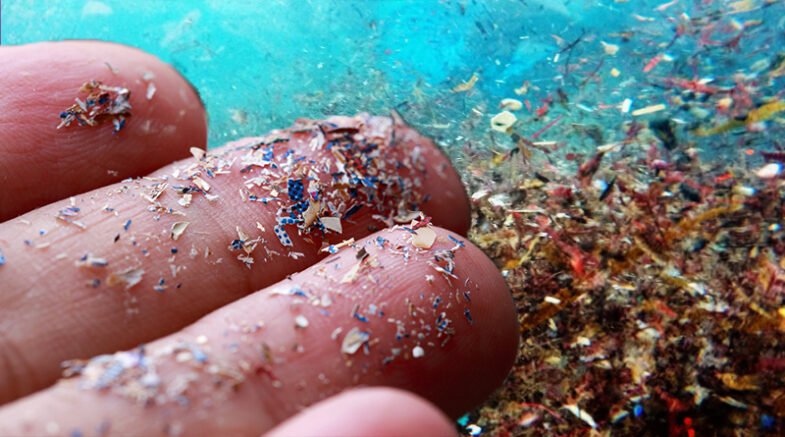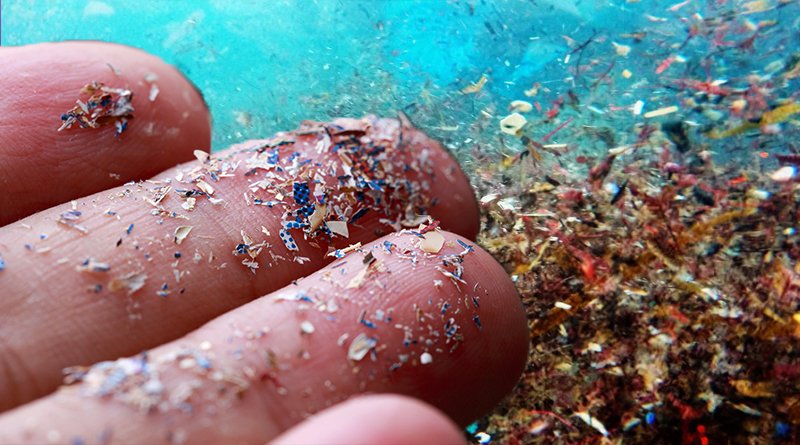This research is promising, according to Rodney Priestley, a professor of chemical and biological engineering at Princeton University who was not involved in the study.

Microplastics pollution can be removed from contaminated water using acoustic waves, which may be a novel approach to dealing with this pervasive pollutant. The study’s authors presented their findings on March 28 at the American Chemical Society’s (ACS) spring meeting.
The researchers are from the New Mexico Institute of Mining and Technology in the US. The majority of plastic waste in the ocean degrades into tiny microplastic fragments less than 5 mm in size, which can be harmful to aquatic life.
The most popular technique for removing microplastics from water is filtration, but the New Mexico Tech team chose to develop a strategy for using sound waves to concentrate plastic particles in flowing water.
The New Mexico Tech team built a proof-of-concept device using 8-mm-wide steel tubes connected to an inlet tube and several outlet tubes, along with a transducer to generate ultrasound.
The acoustic forces are applied to microplastics as they pass through, causing them to aggregate and making them easier to capture in a single outlet. The device could be useful for separating most types of microplastic, and doesn’t clog as easily as a filter.
Menake Piyasena, the project’s leader, asserted that the main benefit of this strategy is “the ability to design a flow through chamber and its simplicity,” despite the fact that the design is still in its early stages. He added that because there are no physical or mesh filters, clogging will be minimised and parts won’t need to be changed frequently.
Conversations with a colleague who was considering chemically decomposing isolated microplastics gave rise to the project’s concept, according to Piyasena. He recalled, “We thought what if we could use the same method to concentrate microplastics, and we started exploring this idea further because we are doing research on using acoustic waves to concentrate biological cells and perform biological reactions on them.”
The researchers made a prototype that captures small microplastics less than 180 m wide in the first stage, and the water stream containing larger microplastics pollution goes to the second stage to be cleaned. They were able to successfully remove more than 70% of the small plastic particles and more than 82% of the large ones.
They demonstrated this system in the real world by testing it on water samples from a pond on their university’s campus and from the Rio Grande River.
They found that the acoustic device removed plastic particles just as effectively as pure water. It costs about 7 cents to operate the prototype device for an hour, and it could clean one litre of water in about 90 minutes.
A new generation of prototypes with wider tubes or bundles of several tubes is what the researchers hope to create. Additionally, they want to test it on unadulterated real-world samples like seawater and washing machine wastewater.
This research is promising, according to Rodney Priestley, a professor of chemical and biological engineering at Princeton University who was not involved in the study. According to Priestley, who was involved in research to remove microplastics from seawater, “removing microplastics pollution from various water sources represents a significant engineering challenge with enormous environmental and health implications.”
According to him, one of the main challenges is the relatively low microplastic concentration in some contaminated sources. The use of acoustic waves to “push” microplastic pollution together is a promising strategy to deal with this problem and improve filtration, according to the study.
